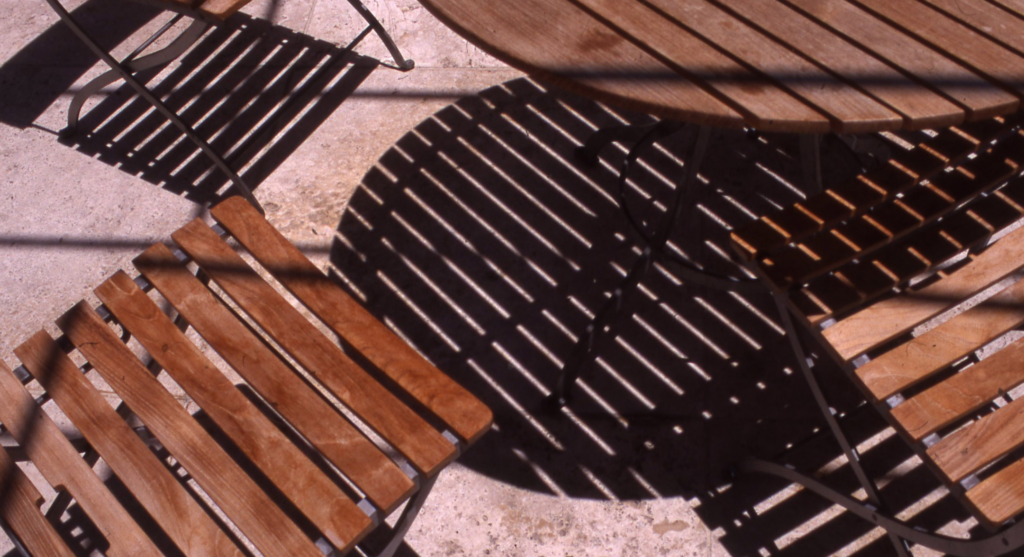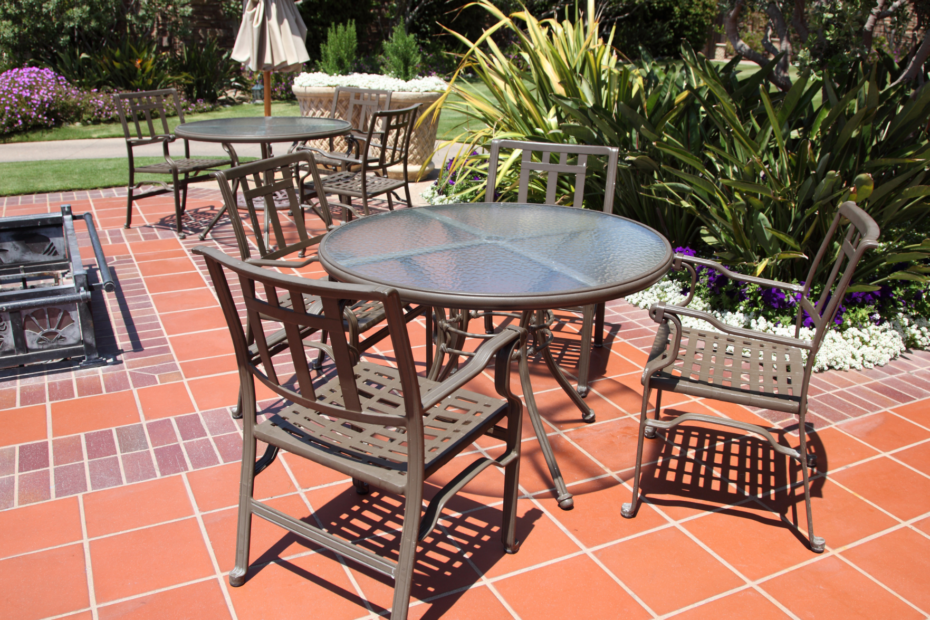1. Understanding Your Outdoor Space
Before purchasing any furniture, it is essential to understand the unique characteristics of your outdoor area. A clear assessment will guide you in choosing pieces that not only fit well but also enhance the overall ambiance.
1.1 Evaluate the Layout and Size
- Measure Your Space:
Start by taking accurate measurements of your outdoor area. Knowing the dimensions helps determine the right scale and quantity of furniture, ensuring that the pieces fit without overwhelming the space. - Consider the Layout:
Think about how you plan to use the space. Do you envision a dining area for family meals, a lounging zone for relaxation, or a multifunctional space for both? Your intended usage will influence the types of furniture you select. - Plan for Traffic Flow:
Ensure there is enough room for movement. Arrange your furniture so that it creates a natural flow without obstructing walkways or creating cramped spaces.
1.2 Analyze Environmental Factors
- Sunlight and Shade:
Determine which areas receive direct sunlight and which stay in the shade. This knowledge will help you choose materials that can withstand intense sun exposure or the moisture that often accompanies shaded spots. - Climate Considerations:
Assess the local climate conditions. For regions with high humidity, rain, or salty air near the coast, you’ll need to focus on weather-resistant materials that can handle such challenges. - Existing Style and Architecture:
Your outdoor furniture should complement your home’s exterior design. Harmonizing the outdoor elements with the architectural style of your residence creates a cohesive look, blending indoor and outdoor spaces seamlessly.
2. Choosing the Right Materials
Selecting the appropriate materials for outdoor furniture is crucial, as they determine the durability and overall maintenance of your pieces. Each material offers unique benefits and has specific care requirements.
2.1 Wood
Wooden furniture exudes warmth and natural charm, making it a popular choice for many outdoor spaces.
- Benefits:
High-quality woods like teak, cedar, and eucalyptus offer natural resistance to decay, moisture, and insects when properly treated. They create a timeless, elegant look and can be stained or painted to match your décor. - Considerations:
Wooden furniture requires regular maintenance, such as oiling or sealing, to prevent weather damage. Without proper care, wood can deteriorate over time due to exposure to the elements.
2.2 Metal
Metal furniture, including aluminum, wrought iron, and steel, provides a modern aesthetic and durability.
- Aluminum:
Lightweight and resistant to rust, aluminum is ideal for outdoor settings. Its low-maintenance nature makes it a favorite; however, it can become hot under direct sunlight, so pairing it with comfortable cushions is advisable. - Wrought Iron and Steel:
These materials offer robust and classic designs, perfect for creating a sophisticated atmosphere. They are heavier and often require protective coatings to prevent rust, especially in humid or coastal areas.
2.3 Plastic and Resin
Plastic and resin options are budget-friendly and versatile, often designed to mimic the look of natural materials.
- Advantages:
These pieces are lightweight, low-maintenance, and typically resistant to fading, making them ideal for areas exposed to varying weather conditions. They are often available in a wide range of colors and styles. - Drawbacks:
Although practical, plastic and resin furniture may lack the premium feel and durability of wood or metal. Quality can vary, so it is essential to choose reputable brands.
2.4 Synthetic Wicker
Synthetic wicker, often made from resin fibers, is designed to emulate natural wicker while offering enhanced durability.
- Advantages:
It resists fading, cracking, and moisture, making it well-suited for outdoor use. Synthetic wicker combines aesthetic appeal with practicality, providing a relaxed, tropical vibe. - Considerations:
Quality is key when it comes to synthetic wicker. Investing in high-quality pieces ensures longevity and a consistently attractive appearance over time.
2.5 Outdoor Fabrics
When it comes to cushions and upholstery, outdoor fabrics are engineered to resist stains, fading, and mildew.
- Characteristics:
Look for materials like solution-dyed acrylic or polyester, which are specifically designed for outdoor environments. These fabrics often come with removable covers that are easy to clean and maintain. - Tips:
Regular cleaning and proper storage during harsh weather conditions will extend the life of your outdoor textiles.
3. Design and Aesthetics: Creating a Harmonious Outdoor Space
Your outdoor furniture should reflect your personal style while enhancing the overall look of your space. The right design choices can make a significant impact on how inviting and comfortable your area feels.

3.1 Defining Your Style
Consider what aesthetic best represents your personality and complements your home’s architecture.
- Modern and Minimalist:
Clean lines, neutral colors, and sleek designs characterize this style. It works well for contemporary homes and urban environments. - Rustic and Traditional:
Emphasize natural materials, earthy tones, and handcrafted details. This style is perfect for creating a warm, welcoming environment in gardens or countryside settings. - Coastal and Tropical:
Light hues, weathered finishes, and casual designs are ideal for beachside homes or warm climates. The relaxed vibe of coastal style makes outdoor spaces feel breezy and inviting. - Eclectic:
A mix of vibrant colors, diverse textures, and unique pieces can create an artistic and personalized outdoor retreat.
3.2 Combining Colors and Textures
A well-thought-out color palette and texture combination can transform your outdoor area into a visual masterpiece.
- Cohesive Color Schemes:
Choose colors that complement both your furniture and the natural surroundings. Neutral bases with splashes of bold color can create a balanced and dynamic look. - Layering Textures:
Mix materials such as wood, metal, and fabric to add depth and interest. This approach not only enhances visual appeal but also allows for a more flexible arrangement of pieces.
4. Durability and Weather Resistance
Outdoor furniture must be built to withstand varying weather conditions. Investing in durable, weather-resistant pieces is crucial for long-term satisfaction.
4.1 Weatherproofing Techniques
- Protective Finishes:
Wood and metal furniture benefit from protective sealants and finishes. These coatings guard against UV rays, moisture, and temperature fluctuations, preserving the integrity of the materials. - Water-Resistant Treatments:
For fabrics and cushions, water-resistant treatments are essential. They help prevent stains and mold, ensuring that your textiles remain vibrant and comfortable despite exposure to rain or humidity.
4.2 Considerations for Longevity
- Quality Construction:
Focus on furniture with robust construction methods, such as reinforced frames and sturdy joints. High-quality pieces often come with warranties that attest to their durability. - Regular Maintenance:
A routine cleaning and maintenance schedule will help extend the lifespan of your outdoor furniture. Simple actions like cleaning spills immediately and applying protective coatings as needed can prevent long-term damage.
5. Budgeting and Investment
Purchasing outdoor furniture is an investment in your home’s aesthetics and functionality. Balancing quality with cost is essential to achieve lasting value.
5.1 Establishing Your Budget
- Identify Priorities:
Determine which pieces are essential for your outdoor area. Investing in high-quality key pieces, such as a durable dining set or comfortable lounge chairs, can provide a solid foundation for your space. - Long-Term Value:
Consider the long-term benefits of investing in premium materials. Although the upfront cost may be higher, the durability and reduced need for replacement can result in overall savings. - Research Deals:
Keep an eye out for seasonal promotions and clearance sales. Many retailers offer significant discounts during off-peak seasons, making it easier to furnish your space without overspending.
5.2 Balancing Cost and Quality
- Mix and Match:
It’s not necessary to purchase a complete set at once. Combining a few high-quality statement pieces with more affordable complementary items can create a balanced, stylish look without compromising on quality. - DIY Options:
For those who enjoy hands-on projects, consider building or upcycling your own outdoor furniture. DIY projects can be both economical and personalized, allowing you to tailor your space to your exact preferences.
6. Maintenance and Care
Taking proper care of your outdoor furniture is key to maintaining its appearance and functionality over time.
6.1 Daily and Periodic Cleaning
- Routine Dusting:
Regularly dust and wipe down surfaces to prevent the buildup of dirt and debris. Use a soft cloth and gentle cleaning solutions appropriate for the specific materials. - Deep Cleaning Sessions:
Schedule periodic deep cleaning sessions to remove stubborn stains and contaminants. For example, wooden furniture may benefit from a mild soap solution, while metal pieces might require a rust inhibitor.
6.2 Protection and Storage
- Use of Covers:
Invest in high-quality protective covers to shield your furniture during adverse weather conditions. Covers can prevent damage from rain, wind, and intense sunlight. - Seasonal Storage:
If possible, store your outdoor pieces in a sheltered area during extreme weather periods such as winter. This extra layer of protection can significantly extend the life of your furniture. - Regular Inspections:
Periodically check for signs of wear, such as fading, rust, or damage to fabric. Addressing these issues promptly can prevent further deterioration.
7. Trends and Innovations in Outdoor Furniture
Staying updated with the latest trends can inspire you to create a more dynamic and modern outdoor space.

7.1 Sustainable and Eco-Friendly Options
With a growing emphasis on sustainability, many manufacturers now offer furniture made from recycled materials or responsibly sourced wood. These eco-friendly choices not only reduce your environmental footprint but also bring a unique, natural aesthetic to your outdoor area.
7.2 Technological Advancements
Modern outdoor furniture is increasingly integrating technology for added convenience and ambiance. Innovations such as built-in LED lighting, smart seating arrangements, and modular designs allow for adaptable spaces that can transform with your needs. These smart features make your outdoor environment not only more functional but also a highlight of contemporary design.
7.3 Customization and Multifunctionality
Customization is becoming a popular trend, allowing homeowners to choose finishes, colors, and configurations that reflect their personal style. Multifunctional furniture that doubles as storage or converts for different uses maximizes the utility of your space, making even smaller outdoor areas work harder for you.
8. Final Considerations for a Perfect Outdoor Setup
Creating an ideal outdoor space is a process that involves both creative vision and practical planning. Here are some final tips to keep in mind:
- Plan Thoroughly:
Sketch out your space and experiment with different layouts before making any purchases. Visual planning tools and apps can help you see how your furniture will fit and function in the area. - Focus on Comfort:
While style is important, the comfort of your outdoor furniture is paramount. Choose pieces that offer good support and invite you to relax, whether it’s for reading a book on a sunny afternoon or enjoying a meal with family and friends. - Embrace Flexibility:
Your needs may change over time. Opt for modular or versatile furniture that can adapt to different functions and occasions, ensuring that your outdoor space remains useful and engaging for years to come. - Invest in Quality:
While it might be tempting to opt for cheaper options, investing in high-quality furniture will pay off in the long run through increased durability and reduced maintenance costs.
Conclusion
Choosing the right outdoor furniture is more than just a decorative decision—it is an investment in creating a comfortable, stylish, and durable outdoor living space that enhances your quality of life. By carefully assessing your outdoor area, selecting materials that balance aesthetics with weather resistance, and planning a budget that reflects both immediate and long-term needs, you can build an outdoor oasis that seamlessly blends with your home’s design.
From understanding the importance of spatial planning and environmental factors to exploring modern trends like sustainable materials and smart integrations, this guide has provided you with a roadmap to make well-informed decisions. Whether you are furnishing a sprawling garden, a compact balcony, or a sun-drenched patio, every choice you make contributes to creating a space that is both beautiful and practical.
Remember, the perfect outdoor area is a dynamic and evolving space. Regular maintenance, thoughtful updates, and a willingness to adapt to new trends will ensure that your outdoor living environment remains a source of joy and relaxation. Enjoy the process of creating your outdoor retreat, and let your space reflect your personal style while standing up to the challenges of the natural elements.
Invest in quality, embrace innovation, and let your outdoor furniture transform your environment into a welcoming extension of your home—a place where every moment spent outdoors feels like a breath of fresh air.

